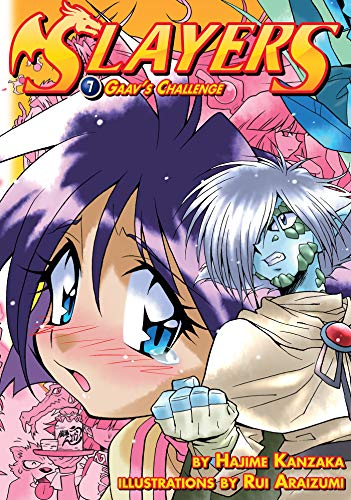By Hajime Kanzaka and Rui Araizumi. Released in Japan by Fujimi Fantasia Bunko. Released in North America by J-Novel Club. Translated by Elizabeth Ellis.
After the previous volume, which was essentially an anniversary special, Kanzaka seems to have remembered how much fun it was to write Lina and Gourry, and so has returned to Slayers once more to kickstart a new arc. That said, he knows that he’s already used up most of the plots and fight scenes that he can in Lina’s world. There’s only so many times that you can battle a Dynast General and not have it seem dull, you know? Of course, he COULD just give in and write Lina taking Gourry to meet her family, which she’s been trying to do for the last couple of books, but that would involve writing her family, and we already know that characters like Lina’s older sister Luna work better as an unseen threat. As such, this volume DOES start with a battle with a Dynast general… who promptly gives in because Lina’s reputation is Just. That. Bad. Unfortunately, when they emerge from the fight they’re not in Kansas… erm, Zephilia anymore, but in a completely different place.
As it turns out, Lina and Gourry hail from the demon lord side of the continent. There’s also a dragon side of the continent, separated by a strong barrier to keep the two sides from meeting. And now Lina and Gourry, thanks to that annoying Dynast general, are in Ceifeed lands, with no idea how to return home. They spend most of the start of the book trying to decipher the different writing system, figure out the money conversion, and slowly making their way towards a real city. Along the way they run into a spunky young girl, Ran, who may act like a hyperactive tween but also can use wind magic and has an incredibly powerful staff. Unfortunately, as they move along, it becomeds apparent that Lina’s type of sorcery is far more powerful than these foiks are used to… and they want it for themselves.
The main issue I have with this book is that it’s a setup for more books down the line. Ran is a fun character, but we learn next to nothing about her, nor do we know anything about her motivation for traveling with Lina and Gourry. The villains in this book (leaving aside the city guard guys, who are more mooks than anything else) tend to blend together like most minor Slayers villains do, but they certainly show a callous disregard for human life or property… something that becomes more understandable when you realize who they are. Other than that, this is a perfectly decent Slayers book. Lina and Gourry are always fun, and we get to see Lina trying to get past her own reputation even in a place where it doesn’t precede her. The fights are action packed, and if they ever animate Slayers again might be fun to see. It will be interesting to see where this arc goes.
Unfortunately, this book came out in 2019, and there’s no Vol. 18 on the horizon, so we may never see how the arc goes. Which is the most frustrating part of this book, to be honest.














